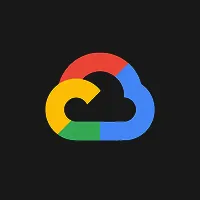In today’s cloud-native landscape, modern applications must operate much quicker with better scalability and respond to real time events. Traditional request-driven architecture will struggle to keep up when there is high-volume asynchronous communication between services. This is where Google Cloud Pub/Sub helps by providing a fully managed messaging and event ingestion service designed for event-driven architectures (EDA).
With Cloud Pub/Sub, developers can elegantly build systems that exchange messages between independent services asynchronously and with reliability without the expense and overhead of managing message brokers/servers.
What is Google Cloud Pub/Sub?
Google Cloud Pub/Sub provides a fully managed messaging service that enables event-driven communication between applications.
Google Pub/Sub follows the publish and subscribe pattern where:
- Publishers publish messages to a topic.
- Subscribers consume messages from the topic, asynchronously.
The publish-subscribe model decouples the sender and receiver to allow flexibility and scalability, making it a great choice for distributed microservices, IoT and streaming data systems.
Why Select Cloud Pub/Sub for Event-Driven Architectures?
Event-driven architectures depend on real-time communication across multiple services or components. Cloud Pub/Sub provides:
- Asynchronous Communication: Services do not have to await a response from a service, they instead react to events when they take place.
- High Scalability: Automatically scales to accommodate for millions of messages per second.
- Reliability and Durability: Guaranteed delivery, coupled with message persistence means no message is lost.
- Low Latency: Provides near-real-time data delivery for speedier interaction as a whole.
Integration with other Google Cloud Services: Functions and integrates with Cloud Functions, Dataflow, BigQuery, and Cloud Run seamlessly.
Cloud Pub/Sub Architecture
Cloud Pub/Sub has three architectural components:
- Topic: A unique name for a resource that publishers send messages to.
- Subscription: A unique name for a resource that represents the stream of messages and unique name for a resource from one topic that subscribers receive messages from.
- Publisher & Subscriber: A publisher can publish messages to a topic and subscribers receive messages from a subscription in a way that is asynchronous.
After an event is triggered, the publisher provides the event to a topic. Pub/Sub will then deliver the message to all subscribers who are up and running. Each subscriber will process the event from the publisher and there is no constraint on scaling the event processing.
Applications for Cloud Pub/Sub
- Microservice Communication: Asynchronous communication between services eliminates dependencies.
- Real-Time Analytics: Stream IoT device data or user events to data sinks such as BigQuery or Dataflow, allowing for real-time analysis.
- Application Monitoring: Allow for alerts and workflows to be triggered based on system events.
- Data Integration: Synchronize events from applications, databases, and cloud destinations.
- Workflow Automation: Connecting Cloud Functions to Pub/Sub can allow automated triggering of workflows.
Advantages of Cloud Pub/Sub
- Fully Managed: No brokers, no infrastructure. Pub/Sub is totally managed and is built on top of Google’s global infrastructure.
- At Least Once Delivery: Pub/Sub guarantees that every published message is delivered at least once.
- Scalable: Pub/Sub can accommodate any workload, from a few messages to millions messages per second.
- Secure: Provides IAM-style permissions and encrypts data on behalf of the customer.
- Flexible: Pub/Sub works with any programming language, framework, or cloud platform that has access to REST apis or SDKs.
Designing an Event Driven Architecture Using Cloud Pub/Sub
When designing an event-driven architecture for Cloud Pub/Sub, use the following best practices:
- Identify your events: Define the events that you need to publish in your system. Examples could include user sign-ups, order placements, or payment confirmations.
- Define Topics and Subscriptions: Create topics to represent a category of events, and subscriptions that represent the services that will handle that set of events.
- Integrate with Cloud Functions or Dataflow: Automate downstream tasks like analytics, data transformation, or API calls.
- Monitor and Optimize: Use Cloud Monitoring and Cloud Logging to track message flow and performance.
Recommended Protocols for Developers
- Use Dead Letter Topics to effectively manage failed messages.
- Establish retry policies in the event of transient errors.
- Use ordering keys to manage message order if needed.
- Filter messages to minimize processing costs.
Write subscribers so that they are idempotent to allow them to process the same message multiple times without issue.
Conclusion
Google Cloud Pub/Sub is a fundamental component of event-driven architectures, allowing applications to respond to changing data in real-time. It provides a reliable, fully-managed, scalable messaging system that allows you to build loosely-coupled systems that can handle high-throughput workloads.
By combining Cloud Pub/Sub with services like Cloud Functions, Dataflow, and BigQuery, you can build an end-to-end event-driven ecosystem that processes data in real time and automates your applications.
In a world of real-time computing, Cloud Pub/Sub will help ensure your systems are fast, flexible, and ready for the future.









